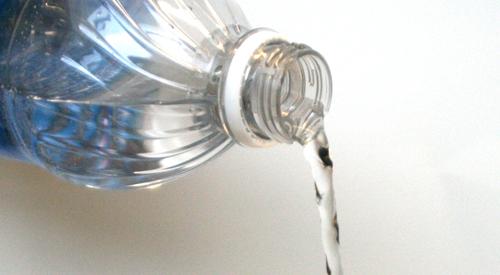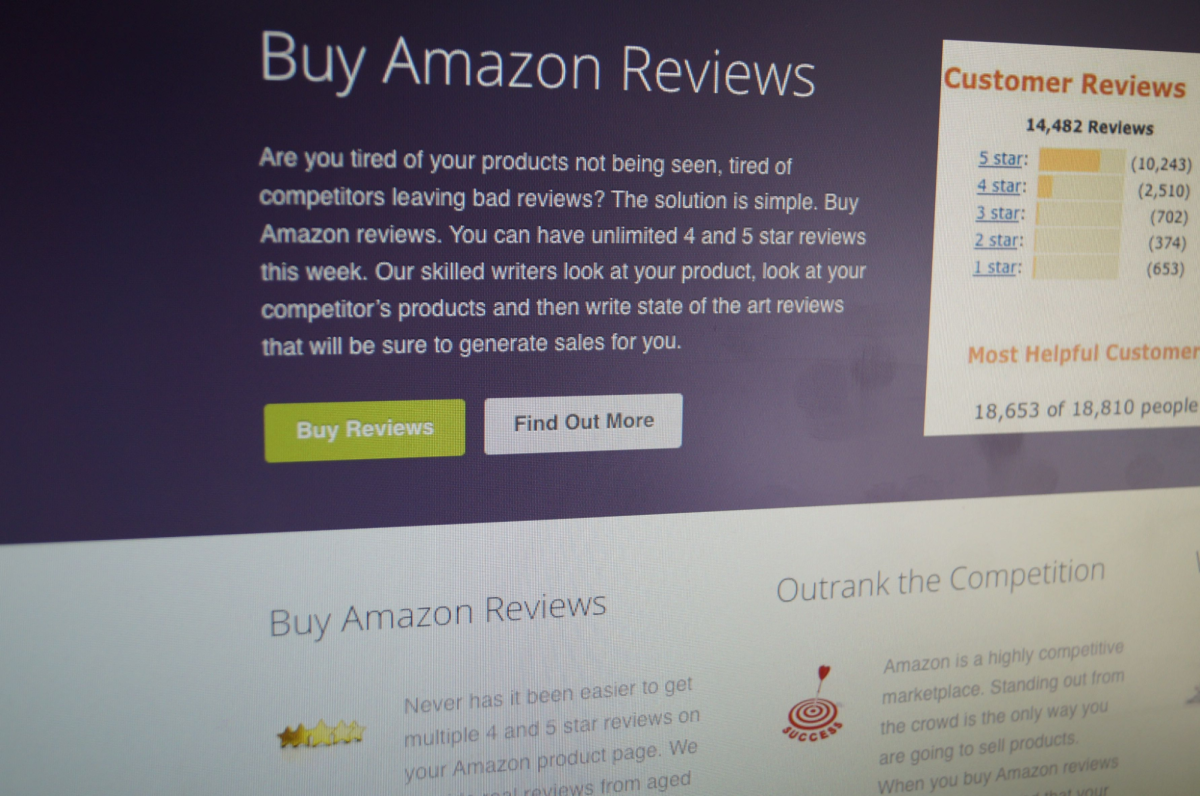By Gina Jarvis, Kaprice Sanchez, and Elaine Cannell
The past decade has been filled with the new American obsession with “going green.” One hot environmental topic on the table? Bottled water.
Freshman Spencer Good does his part. He carries a plastic water bottle with him that he reuses, rather than buying a new bottle of water every day. He’s trying his best to reduce his amount of waste and pollution that water bottles cause. “I don’t waste plastic between the store bought ones, and so I can wash it and reuse it,” Good said.Yet Good is unusual. Less than a quarter of the water bottles the United States uses actually get recycled. More than three quarters are thrown into the trash, according to the U.S. Government Accountability Office (GAO). Another 30 billion water bottles a year become litter.”Most people I see with water bottles don’t think about what happens to it once they throw it in the trash,” Good said. It will take over a thousand years for each bottle in a landfill to fully decompose, according to the Environmental Protection Agency.Statistics like these are why environmental activists like those from the Natural Resources Defense Council are growing increasingly concerned about American’s preference for bottled water. The entire process from the moment the bottles are manufactured to the moment they are discarded generates waste and pollution. Expanding sales, expanding impact
The average American consumer now drinks 27.6 gallons of bottled water each year, according to industry statistics, and that makes bottled water a $10.5 billion dollar industry. Consumption is on the rise as well. Statistics from the Beverage Marketing Corporation’s 2010 report show that between 2004 and 2009, American’s consumption of bottled water increased by 24 percent, while sales of bottled water have more than quadrupled since 1990. The growing popularity of bottled water means that it is also a growing environmental concern for many, including Peter Gleick, president of the Pacific Institute, an environmental advocacy organization focused on water policy and other sustainability issues. Gleick published a peer-reviewed study in 2009 that estimated the environmental impacts of bottled water. “As bottled water use continues to expand around the world, there is growing interest in the environmental, economic, and social implications of that use, including concerns about waste generation, proper use of groundwater, hydrologic effects on local surface and groundwater, economic costs, and more. But a key concern is how much energy is required to produce and use bottled water,” Gleick said. “It turns out the answer is, a lot.”
Environmental effects
To meet the demand for bottled water in the United States, more than 2.7 million tons of plastic is made into water bottles on a yearly basis.One of the largest problems with the plastic bottles is that they don’t just decompose over a matter of days, or years, for that matter. It takes thousands of years for water bottles to be broken down into landfills. And water bottle waste stretches further than just landfills.According to the Safe Drinking Water Foundations, when bottles are disposed in the ocean, they can be broken up due to their reactivity to the sunlight, turning the bottles into bite size plastic pellets. These pellets turn deadly when fish and birds consume them. Shipping water bottles around the world is another environmental concern. In 2006, more than 6,000 tons of global warming causing pollution entered the atmosphere from the gasoline burned shipping water bottles overseas to the United States.
Is bottled better?
Bottled water is popular among consumers in part because of convenience and in part because it seems purer than tap water. Yet often, bottled water is tap water. Although the bottles often show lakes and mountains in the background, industry statistics show that nearly half of bottled water is tap water. According to 2009 figures from the Beverage Marketing Corporation, 52.2 percent of bottled water is from spring sources and 47.8 percent is from municipal sources. Companies often filter the tap water further, using processes such as reverse osmosis, distillation or de-ionization. Regulations require companies to print the source of the water on the bottle. Aquafina, one of the brands sold in the Kaneland cafeteria, indicates on the label that it is “purified drinking water that originates from public water sources.” Yet environmental groups, such as the Environmental Working Group and the NRDC, have charged that 18 percent of water companies do not label their water source, and others label misleadingly.The labeling is important, Leeann Brown of the Environmental Working Group said. “We think that consumers have a right to simple information about their water,” said Brown. “Three questions [need to be answered]. Where does the water come from, or what is its source? What purifications methods are used, if any? And have there been any tests of contamination for the water? This is all information that [consumers] can’t always get with bottled water.”Consumers have the perception that bottled water is purer, Brown said, but that perception is often just that: perception. The Environmental Working Group conducted bottled water quality tests and found that most bottled water is not safer than ordinary tap water.In most places in the U.S., tap water undergoes more stringent monitoring than bottled water does, Brown said. Tap water also contains added fluoride, which reduces tooth decay, and most bottled water, which is filtered, has little to no fluoride. Some studies have suggested those who drink bottled water have more cavities. However, Tom Laurie, the Vice President of Communications for the International Bottled Water Association said that the regulation of bottled water is rigorous. “Although the FDA only inspects every couple of years, we have to file reports regularly. We’re very regulated. If there’s a problem with tap water, there isn’t anyone can do about it except wait for a couple of months for [the FDA] to fix it. But we don’t have that luxury. If we were to put out a bottle of spring water and it was purified water, that would be misbranded, and all of it would be pulled,” Laurie said.
What you don’t know about water bottles
Some plastic water bottles are made from the toxin bisphenol A, which some studies have suggested can leech into the water when exposed to excessive heat or cold. Low doses of the toxin are linked to different kinds of cancers, such as breast and prostate and diabetes.The NRDC found that in 22 percent of the brands tested, at least one sample contained chemical contaminants, including phthalates and bisphenol A. Even baby bottles have been recalled for their bisphenol A plastic after some reports of health issues in infants.Studies have shown that the same phthalates in the water bottles that can damage the environment can also cause health problems because they disrupt testosterone and other hormones. That’s a concern to many experts because phthalates can leach into bottled water over time. The NRDC found that water that had been stored for 10 weeks in plastic and in glass bottles contained phthalates, suggesting that the chemicals could be coming from the plastic cap or liner.However, the science is far from conclusive, and many of the studies have been conducted by interested parties. Scientists at the FDA have approved these plastics as safe for decades.”The BPA plastic that single-serve waters come in has been approved since the 1970s as a universal food container. We don’t use anything the FDA hasn’t approved and that science says is fine. It doesn’t leech. All plastic has the potential to migrate, but this plastic is so stable and the particles are so microscopic, it is of no concern,” Laurie said.
Ways to help the environment
What can consumers do? Recycling the bottles consistently is the simplest step, and one Laurie said the IBWA is working hard to promote. Recycled bottles do not end up in landfills. Better yet, environmental groups recommend, eliminate the need for manufacturing and shipping water around the world, thereby reducing emissions, by buying a reusable bottle made of aluminum or glass and filling it from the tap.










